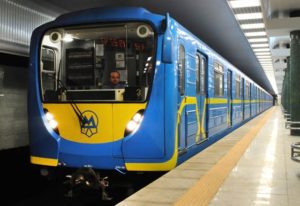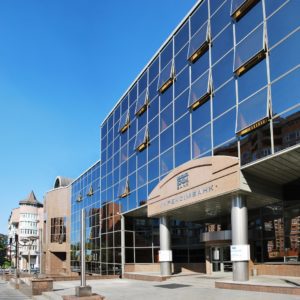National bank of Ukraine’s official rates as of 27/12/19

Source: National Bank of Ukraine

PJSC Azot (Cherkasy), part of Dmytro Firtash’s Group DF, produced 1.42 million tonnes of nitrogen fertilizers in January-November 2019, which is 9.2% more than for the whole of 2018, Group DF’s press service has said.
According to a press release, production of ammonium nitrate for the reporting period amounted to 417,500 tonnes, carbamide some 557,200 tonnes, carbamide-ammonia mixture some 438,100 tonnes. At the same time, production of ammonia was 55,700 tonnes, non-concentrated nitric acid some 507,200 tonnes, and ammonia water some 9,200 tonnes.
“In 2019, we achieved almost 100% loading of our production capacities. The growth in production volumes by the end of the year will be about 10% … For the 11 months of this year, we increased production of carbamide-ammonia mixture by 81% compared to the corresponding period last year (from 240,900 tonnes to 438,100 tonnes). Carbamide production increased by 55%. Nitrate production also increased, but only slightly,” Group DF’s press service said citing Vitaliy Skliarov, the chairman of the company’s board.
Among the main growth factors, the company indicates the antidumping measures of the Interdepartmental Commission on International Trade regarding the supply of fertilizers from the Russian Federation.

The Kyivstar mobile communication operator launches the service to pay for the 838 taxi service using SMS messages, the press service of the company reported on Thursday. According to the press release, the service is available to all Kyivstar prepaid subscribers in 15 cities of Ukraine where the 838 taxi service operates.
The payment is settled using the Kyivstar’s Smart-Money financial service. To do this, when ordering, one need to specify the Smart-Money payment method from Kyivstar or download the Taxi 838 application in the App Store or Google Play and select the appropriate form of payment. At the same time, one does not need to enter information about a credit card. It is enough for the subscriber to have the necessary amount on his mobile account. “The service is simple, safe and does not require a passenger to enter personal data,” the press service said, quoting Head of Kyivstar’s Mobile Financial Services Serhiy Koptik.
According to the operator’s estimates, more than 150,000 subscribers can potentially use the application. This is exactly the number of Kyivstar customers who have called the 838 taxi service over the past few months, although less than 17% of passengers used credit card payments. “This suggests that Ukrainians are still afraid of leaving information about their credit cards in applications,” Koptik said.
The operator said that more than 2,500 active services were posted on the Smart-Money platform, and more than 10 million transactions with it were implemented. The most popular services are payment for telecommunication services, national lotteries, online purchases, and public transport fares.

PJSC State Export-Import Bank (Ukreximbank, Kyiv) and McKinsey and Co. Ukraine LLC on December 16, 2019 signed an agreement on advising regarding the drafting of the bank’s development strategy for 2019-2023, according to information in the ProZorro e-procurement platform.
The price of the services, which according to the documentation must be provided before December 31, 2021, is EUR 960,000. The cost of advising services for developing the strategy, in particular, is EUR 84,000, and if the bank’s supervisory board approves the strategy developed by the company, the amount will increase by another EUR 120,000.
Ukreximbank, the sole owner of which is the state, was created in 1992. The net profit of the financial institution in January-September 2019 amounted to UAH 2.27 billion, which is 2.2 times more than in the same period in 2018 (UAH 706.24 million).
According to the National Bank of Ukraine, as of October 1, 2019, the bank ranked third among 76 banks operating in the country in terms of total assets (UAH 205.439 billion).

Saga Development will build the Franklin Concept House premium class complex with commercial and office space located at 69, Honchara Street in Shevchenkivsky district of Kyiv. “This is the first residential complex in Kyiv with a five-star level of service. The building will feature exquisite architecture, innovative concierge service, developed internal infrastructure and a location in the city center,” the Saga Development press service said in a statement.
According to him, the apartments will be accompanied by round-the-clock service, including concierge services and a porter. In addition, the complex provides round-the-clock security and a video surveillance system with access to cameras from a mobile application.
The building will have from seven to 19 floors. The residential complex has 141 apartments, some of which include terraces. On the lower floors there will be commercial premises and offices. Infrastructure also provides parking for 37 cars.
According to LUN.ua website, the estimated commissioning dates are the fourth quarter of 2022.
The developers of the project are Saga Development in partnership with Perfect Group and Kyivproekt Development. The customer of the project is Concept-Plaza LLC, and the general contractor is Nika Ltd.
The Saga Development project portfolio includes 17 residential complexes at different stages of implementation: Rybalsky, Chicago Central House, San Francisco Creative House, New York Concept House, Bristol Comfort House, Einstain Concept House, Resident Concept House, Philadelphia Concept House, Happy House, (all based in Kyiv), Kandinsky Odessa Residence and Art Kvartal City Space (both are located in Odesa) and others.

EssilorLuxottica French-Italian holding, a large player on the global eye-glass, optic equipment market, could acquire Luxoptica, the largest Ukrainian eye-glass network with 176 shops, the Antimonopoly Committee of Ukraine has reported. The committee said that the committee on Thursday will discuss the provision of a permit to Essilor Nederland Holding B.V. (the Netherlands), fully owned by EssilorLuxottica, to acquire over 50% in International Optical House Holding B.V. (the Netherlands), which holds 100% of Luxoptica Holding LLC (Kyiv).
According to the unified public register of legal entities and private entrepreneurs, the ultimate beneficiaries of Luxoptica Holding are Nadia Shalomova, wife of businessman and former head of the presidential administration of Ukraine Borys Lozhkin, and co-owner of the Dobrobut medical network Oleh Kalashnikov.
Luxoptica was not immediately available for comment.
EssilorLuxottica is a global leader in the design, manufacture and distribution of ophthalmic lenses, frames and sunglasses.
EssilorLuxottica supplies its products to a wide network with more than 10,000 stores, and also sells its products in line with the omnichannel sales model.
In particular, the company is known for such brands of glasses as Ray-Ban and Oakley, optical technologies Varilux and Transitions and ophthalmic retail chains Sunglass Hut and Lenscrafters.
The French Essilor acquired the Italian company Luxottica Group in 2017 for EUR 22.8 billion, creating the largest European lenses manufacturer as a result of the transaction.